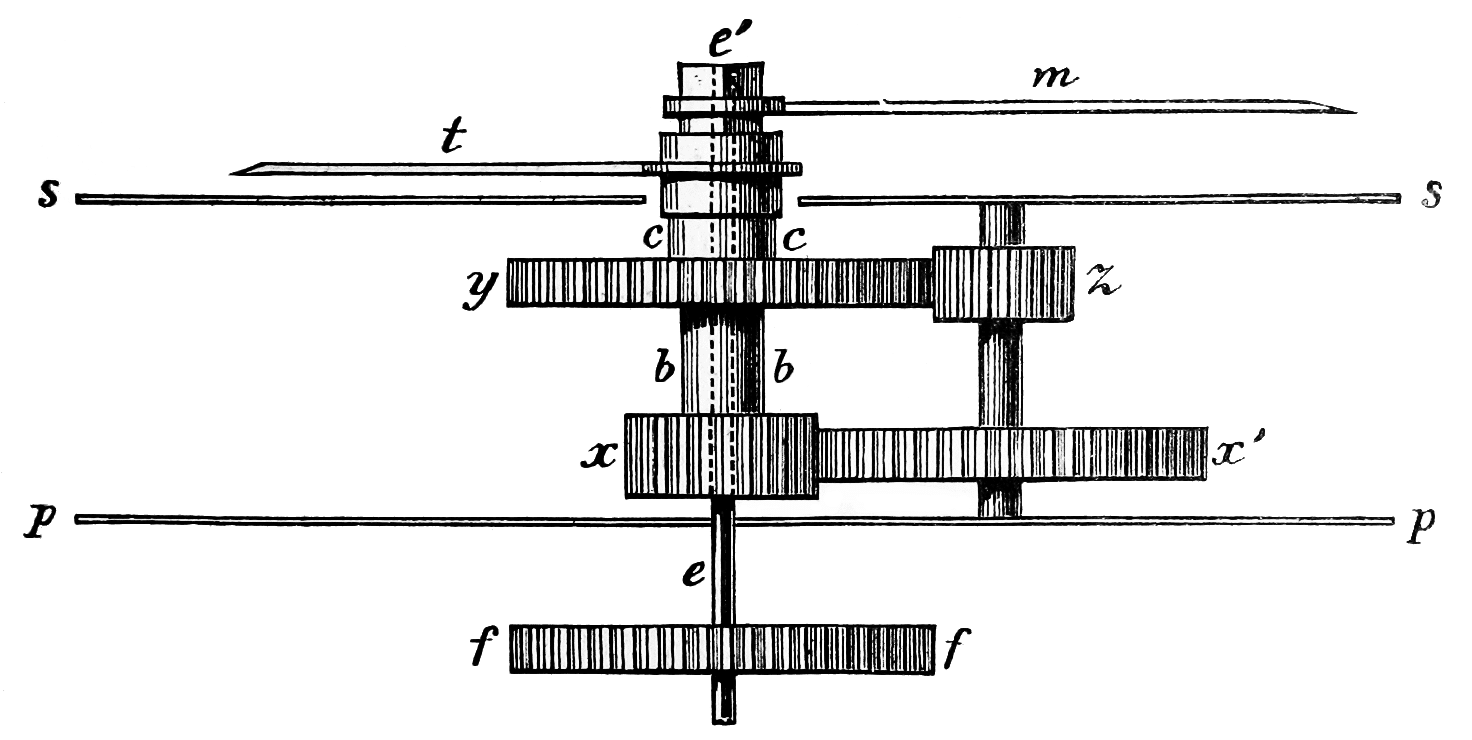Wheel Work – Terminology
Wheel work is the basis for the construction of all instruments for the registering of time.Even the clepsydra, one of the earliest forms of a clock, which operated by the by the dripping of water, involved the use of wheels. The wheels of these early clocks as well as those of the first pendulum clocks were filed out by hand and although the workmanshipon some of the later creations was quite skillfully executed, they were, of course, very crude as compared with the machine-madewheels of modern clocks and watches. Since wheels are fundamental to the construction of watches, we have decided that this opening chapter shall be given over to the consideration of wheels as they apply to the science of horology.
Below are listed several definitions relative to the subject:
Wheel: any circular piece of metal on the periphery of which teeth may be cut of various forms and numbers.
Pinion: the smaller wheel with teeth called leaves, working in connection with a larger wheel.
Train: a combination of two or more wheels and pinions, geared together and transmitting power from one part of a mechanism to another.
Barrel: a circular box of metal for the reception of the main spring.
Balance: the vibratory wheel, which, in connection with the balance spring, controls the movement of the hands.
Balance spring: a fine, coiled wire, one end of which is attached by a collet to the balance staff and the other end to some stationary part of the watch through the medium of a piece called a stud.
Beat: one vibration of the balance and balance spring resulting from an impulse received by means of an escapement.
Escapement: includes those parts of a watch which change the circular force of the escape wheel into the vibratory motion of the balance.
Pallets: that part of an escapement which receives impulse from the escape wheel and by means of a leave delivers impulse to the balance. This term includes the pallet arms and jewels.
Receiving pallet: that pallet stone over which a tooth of the escape wheel slides in order to enter between the pallet stones.
Discharging pallet: that pallet stone over which a tooth of the escape wheel slides in order to leave from between the pallets.
Lock: the overlapping contact of an escape wheel tooth on a pallet stone”s locking face.







